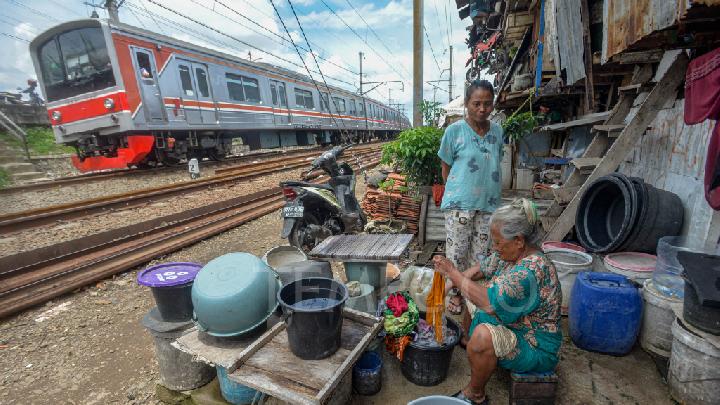Our Terms & Conditions | Our Privacy Policy
What Is Extreme Poverty That the Gov’t Aims to Reduce to 0-0.5% by 2026?
This ambitious target was agreed upon during a meeting between the Budget Committee of House of Representatives and the government on Tuesday, July 22, 2025, at the Parliament Complex in Jakarta.
“The poverty rate is targeted at 6.5 to 7.5 percent, while the extreme poverty rate is expected to fall within the range of 0 to 0.5 percent,” said Budget Committee member Marwan Cik Asan from the Democratic Party faction while reading out the meeting’s conclusions.
This agreement was part of the discussion on macroeconomic assumptions and development indicators for 2026. Initially, the government proposed that the extreme poverty rate could be reduced to 0 percent.
Chairperson of Budget Committee, Said Abdullah, explained that the target had been adjusted to reflect the most recent developments. In 2024, the extreme poverty rate declined from 1 percent to 0.83 percent. The 2025 target is 0 percent, and for 2026, the goal is set at between 0 and 0.5 percent.
What is Extreme Poverty?
Extreme poverty is not only defined by low income but also reflects the inability of individuals or households to meet basic needs such as food, clean water, adequate housing, sanitation, healthcare, education, and access to information.
According to Decision Number 32 of 2022 issued by the Coordinating Ministry for Economic Affairs, extreme poverty is a condition that disconnects individuals from the broader social and economic system.
The World Bank defines extreme poverty based on per capita expenditure. People who live on less than USD 1.90 per day (Purchasing Power Parity or PPP), or around Rp10,739 per person per day, are considered extremely poor.
This means a family of four with a monthly expenditure below Rp1,288,680 would fall into this category.
According to Statistics Indonesia (BPS) data from March 2024, the percentage of people living in extreme poverty stood at 0.83 percent, down from 1.12 percent in March 2023. While this percentage may appear small, under the World Bank’s revised standard, the number of extremely poor people in Indonesia in 2024 reached 15.42 million or about 5.5 percent of the population.
The characteristics of people living in extreme poverty are complex. Based on the March 2021 National Socio-Economic Survey (Susenas):
-
Around 2.14 percent of the population was classified as extremely poor.
-
One in three heads of extremely poor households had not completed elementary school.
-
One in seven heads of extremely poor households was female.
-
Around 20 percent had household members with disabilities.
-
Around 50 percent lacked access to proper sanitation.
-
One in seven households did not have a toilet.
This data shows that extreme poverty is not only about income but also involves limited access to basic and dignified living conditions.
President Prabowo Subianto has stated in several of his remarks that the rates of absolute poverty and unemployment have decreased, citing reports from the head of BPS.
However, to truly achieve the 0 percent extreme poverty target by 2026, the government must tackle various structural and social challenges, such as unequal access to education, healthcare, and economic opportunities.
In addition, changes in international standards, such as the World Bank’s revised poverty threshold—also affect how extreme poverty is calculated, making poverty alleviation efforts more complex and requiring cross-sectoral interventions.
Anastasya Lavenia Yudi contributes to the writing of this article.
Images are for reference only.Images and contents gathered automatic from google or 3rd party sources.All rights on the images and contents are with their legal original owners.



Comments are closed.